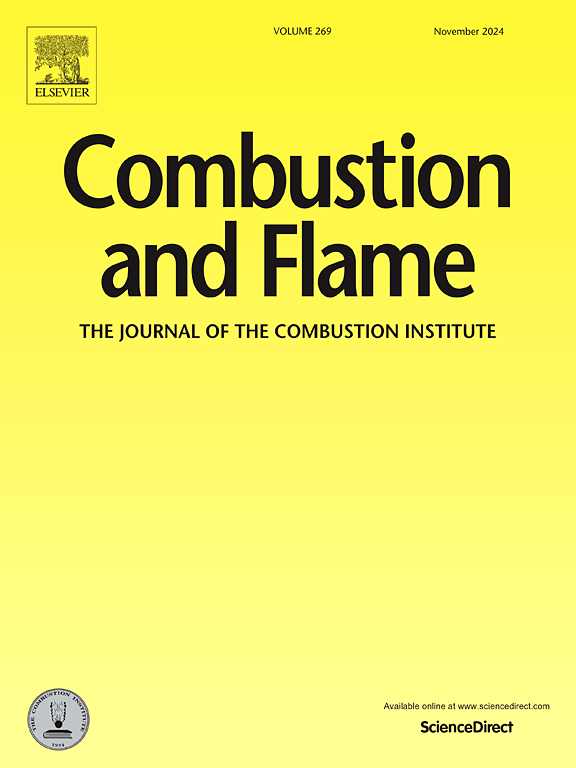Improve energy release of boron by tunable metal-organic frameworks via synergetic micro-explosion and catalysis
IF 5.8
2区 工程技术
Q2 ENERGY & FUELS
引用次数: 0
Abstract
Boron is considered as one of the most promising high energy additives to improve the energy density of aerospace propellants and energetic materials. However, the low energy release properties restrict its practical applications. Herein, three kinds of boron-based composite energetic particles (nB@MOF) were prepared by encapsulating nano boron (nB) in metal-organic frameworks (MOFs) by a self-assembly method with Zn, Co and Mo as metal nodes, and 2-methylimidazole and ethylenediamine as organic ligands. The characterization and dynamics results show that the combustion of organic ligands can induce micro-explosion to destroy the surface oxidation layer of agglomeration and promote the oxidation efficiency of boron. Furthermore, the metal oxide catalyst generated in-situ on nB surface by metal nodes can reduce the initial oxidation temperature and improve the mass transfer distance and interface contact of the oxidation reaction. Compared with nB, the maximum pressurization rate of nB@MOF with 2-methylimidazole as the organic ligand is increased by 31.1 times, the initial oxidation temperature of nB@MOF with Mo as the metal node is reduced by 185.9°C, and the combustion heat of all nB@MOF are increased by more than 1.2 times. This work demonstrates that the energy release properties of boron can be effectively improved by synergistic effect of micro-explosion process and interfacial catalysis.
通过微爆炸和催化协同作用,利用可调金属有机框架改善硼的能量释放
本文章由计算机程序翻译,如有差异,请以英文原文为准。
求助全文
约1分钟内获得全文
求助全文
来源期刊

Combustion and Flame
工程技术-工程:化工
CiteScore
9.50
自引率
20.50%
发文量
631
审稿时长
3.8 months
期刊介绍:
The mission of the journal is to publish high quality work from experimental, theoretical, and computational investigations on the fundamentals of combustion phenomena and closely allied matters. While submissions in all pertinent areas are welcomed, past and recent focus of the journal has been on:
Development and validation of reaction kinetics, reduction of reaction mechanisms and modeling of combustion systems, including:
Conventional, alternative and surrogate fuels;
Pollutants;
Particulate and aerosol formation and abatement;
Heterogeneous processes.
Experimental, theoretical, and computational studies of laminar and turbulent combustion phenomena, including:
Premixed and non-premixed flames;
Ignition and extinction phenomena;
Flame propagation;
Flame structure;
Instabilities and swirl;
Flame spread;
Multi-phase reactants.
Advances in diagnostic and computational methods in combustion, including:
Measurement and simulation of scalar and vector properties;
Novel techniques;
State-of-the art applications.
Fundamental investigations of combustion technologies and systems, including:
Internal combustion engines;
Gas turbines;
Small- and large-scale stationary combustion and power generation;
Catalytic combustion;
Combustion synthesis;
Combustion under extreme conditions;
New concepts.
 求助内容:
求助内容: 应助结果提醒方式:
应助结果提醒方式:


